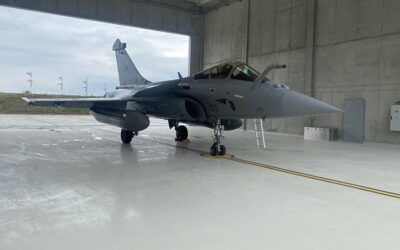EPAA, Romania and Japan
The European Phased Adaptive Approach (EPAA) is the US contribution to NATO’s missile defence system. The construct was conceptually designed to protect Europe against short-, medium-, and intermediate-range ballistic missiles launched from Iran. The approach consists of sea- and land-based configurations of the AEGIS missile defence system, the centrepiece of which is the Raytheon Standard Missile-3 (SM-3) interceptor.
Under EPAA Phase I, four US Navy (USN) ARLEIGH BURKE (DDG 51)-class AEGIS BMD destroyers were forward deployed to Rota, Spain and Turkey hosted a US AN/TPY-2 BMD radar at Kürecik. AEGIS Ashore is the land-based component of the AEGIS ballistic missile defence (BMD) system and is part of EPAA.
The EPAA approach to regional BMD, implemented during the first Obama Administration, deployed the AEGIS system to Europe in the form of (American) BMD-capable AEGIS ships, a land-based radar and two AEGIS Ashore sites in Poland and Romania. In order to take more responsibility for missile defence in Europe, members might discuss building AEGIS-capable destroyers and cruisers (perhaps domestically under license), upgrading existing ships, or purchasing AEGIS Ashore. Purchasing American systems like the AEGIS air defence system would improve NATO interoperability and collective security while also helping members meet the 2% defence spending and 20% equipment spending targets.
The Lockheed Martin-built AEGIS Ashore site in Deveselu Air Base, Romania was certified operational in 2016 as part of the EPAA Phase II and is based on the same technology and equipment used in the USN’s guided missile destroyers and cruisers to protect against ballistic missile threats: a SPY-1D(V) air-search radar linked to three 8-cell Mark-41 Vertical Launch Systems armed with SM-3 interceptors – the same equipment used at sea.
Jim Sheridan, Lockheed Martin’s Vice President of Naval Combat and Missile Defense Systems, offered that, “AEGIS Ashore is a successful program, providing proven and capable missile defence options on ground based environments. Its efficiency and affordability for the Navy and MDA have been key enablers in support of the missile defence missions in the US and Europe.”
Last December, Japan’s cabinet approved the installation of two land-based AEGIS Ashore missile defence systems to defend against North Korea’s growing nuclear and missile threats. The approval will allow the Defence Ministry to buy two AEGIS Ashore systems to add to Japan’s current two-step missile defence system consisting of PATRIOT batteries and AEGIS-equipped destroyers.
As of this 7 June, the US Defense Security Cooperation Agency confirmed the Government of Japan has not yet submitted a formal letter to buy AEGIS Ashore – which would make Japan the third nation to have this system.
Marty Kauchak is a retired US Navy Captain, a defence writer, and a regular contributor to MT.
























